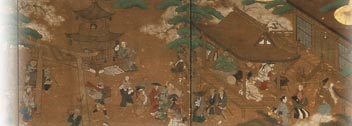Theatre Seminar: The Essence of Shanghai Theatre
Outline
| date |
Monday, June 1, 2009, 14:45–18:00 |
| Venue |
Waseda Campus, Ono Auditorium |
| Organizer |
Japanese Theatre Studies Course / Eastern Theatre Studies Course |
| outline |
Lecturer: LUO Huaizhen (playwright, Shanghai Center of Creative Arts)
“The Hai Pai Spirit in Chinese Theatre: Looking Back on 100 Years of Shanghai Theatre”
Lecturer: JIN Jing (Yueju Opera actress, Qi school, Shanghai Jing-an Yueju Opera Troupe)
“The Art of the Qi School and the Appeal of Yueju Opera”
Lecturer: CHEN Shaoyun (Peking Opera actor, Qi school, Shanghai Peking Opera Troupe)
“The Art of the Qi School and the Appeal of Chinese Theatre” |
Details
With the Expo 2010 World Exposition now less than a year away, world interest in Shanghai is once again mounting. In Shanghai today there are active professional theatre troupes not only for Huaju (spoken theatre, i.e. modern drama) and Huajixi (burlesque) but also for Peking Opera, Kunju Opera, Yueju Opera, Huju Opera and Huaiju Opera, all of them top-class nationally in terms of both size and skill. To look back on the history of the past 100 years of Shanghai Theatre and introduce what is happening there today, the Waseda Global COE program, under the joint sponsorship of the Japanese Theatre Studies Course and the Oriental Theatre Studies Course, held a seminar entitled “The Essence of Shanghai Theatre,” to which it invited three theatre people who represent the current state of theatre in Shanghai. The playwright LUO Huaizhen, the lecturer in Part One, has been an advocate for the modernization of traditional theatre and the adaptation of countryside performances for city audiences since the 1990s. He is widely known for the many new works he has written for Shanghai theatre including the Huaiju Opera play “The Golden Dragon and the Mayfly” (Shanghai Huaiju Opera Troupe, 1993) and the Kunju Opera play “Ban Zhao” (Shanghai Kunju Opera Troupe, 2001), in which these ideas have been put into practice. In his lecture Mr. LUO compared Shanghai to the other leading Chinese city, Beijing, focusing on their historical backgrounds and the differences in tastes of their respective theatre populations and audiences. He defined the distinctive feature of Shanghai culture, and Shanghai theatre in particular, as its protean ability to transform itself and create new things by absorbing the new talent, new art forms and new culture that are constantly streaming in from other parts of the country and the world, while at the same time remaining grounded in tradition. After acquiring an overall appreciation of the history and current state of Shanghai theatre from LUO Huaizhen’s lecture, the audience was treated in Part Two to talks by two actors who are currently active in the leading schools of the two theatres that share equal popularity in Shanghai today, Peking Opera and Yueju Opera. First, JIN Jing, successor of the Qi school of Yueju Opera, founded by QI Yaxian, showed filmed excerpts from the Qi school masterpiece “The Imprint of the Bloody Hand” and the new Yueju Opera version of the “Peony Pavilion.” She then introduced some melodies from Yueju Opera, a passage from the Lü school version of “Mu Guiying Takes Command” to exemplify the expression of vigor and freshness, and a passage from the Qi school version of “The Tale of the White Snake” as a representative example of the expression of grief; and she sang a cappella from both. CHEN Shaoyun, successor of the Qi school, the Shanghai Peking Opera school founded by ZHOU Xinfang, commented on the influence that the Qi school has had not only on the Peking Opera world throughout China but also on film and the cultural world as a whole. He then went on to introduce some of the most important works of the Qi school, from the aspects of singing, speech delivery and gesture. One of the examples, a passage from “The Water Margin,” showing Song Jiang on his way home looking frantically for the letter he has mislaid, performed on the podium using mime alone, provided a rare opportunity to see with our own eyes the quintessence of Qi school art.
> Go To Page Top


